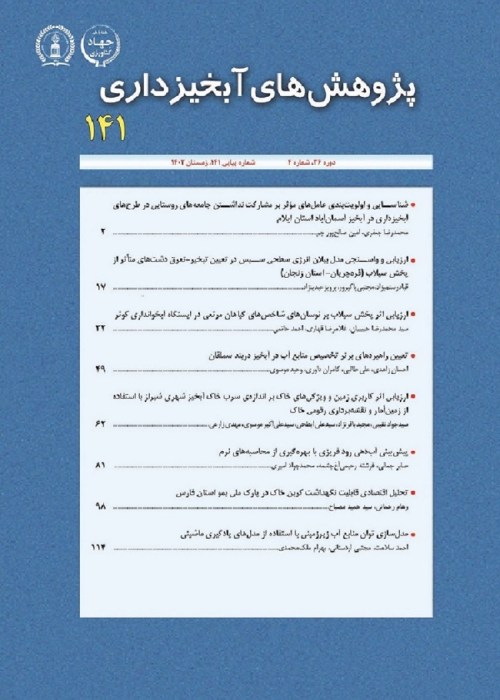Determination of the Quality and the Pollution Level of the Surface Sediments of the Karun River in part of the Ahvaz Urban Area
The Karun River provides an important sedimentary environment for the Great Karun Watershed, which receives large amounts of oil, industrial and municipal sewage, and agricultural wastes. The dominant physico-chemical conditions, which are controlled by water discharge rate and the river morphology, determine the conditions for the absorption of toxic metal and levels of pollution for aquatic creatures and utilizers; in other words, the food chain. Therefore, the study range limited the urban area of Ahvaz between the Fifth Bridge and the Sayyed Khalaf Alley. The research objectives were to determine the concentration of seven toxic metals, namely: Cu, Cr, Cd, Zn, Pb, Ni, and As, and their consequences on the levels of pollution. A deterministic strategy of sampling was chosen based on the identified and surveyed contamination points. In total, twenty-one superficial sediments (0-10 cm) samples were collected using an undisturbed core sampler. The analytical procedure was carried out using the ICP-MS equipment following the Geological Survey procedures. The research method was designed to compare the concentration of toxic metals to their standard levels (ISQGs, PEL, SEL) of sediment quality guidelines of freshwater sediments to find out the level of pollution risk, and the high-risk ranges along the river reach. In addition, the enrichment factor was calculated to determine the rate at which the concentration of toxic metal bias from their background levels. The coefficient of variation of the predominant concentration of elements indicates the contribution of human pollutants in increasing their concentration in sediments and the order of enrichment of elements is Zn> Cu> Ni> As> Cr = Pb> Cd respectively in the surface sediments. The Karun River superficial sediments, especially from the Kianpars Bridge to the Fifth Bridge, were in a harmful condition for Cr, while the concentration was higher than the PEL level (90 mg kg -1). The study concluded that the Ni concentration of the sediments along the studied range was higher than the ISQG, PEL, and SEL (50 mg kg-1) standard level. Thus, aquatic bodies and the users of the Karun River water in such a range are exposed to severe poisoning due to nickel pollution. This situation has occurred while the drained sewage along the districts of the Kianpars Bridge to the Black Bridge and the Naderi Bridge to the Eighth Bridge has played a critical role in releasing pollutants. Thus, preventive measures to control pollutants from the source and methods of neutralizing and removing pollutants from the Karun River sediments are firmly recommended.
- حق عضویت دریافتی صرف حمایت از نشریات عضو و نگهداری، تکمیل و توسعه مگیران میشود.
- پرداخت حق اشتراک و دانلود مقالات اجازه بازنشر آن در سایر رسانههای چاپی و دیجیتال را به کاربر نمیدهد.



